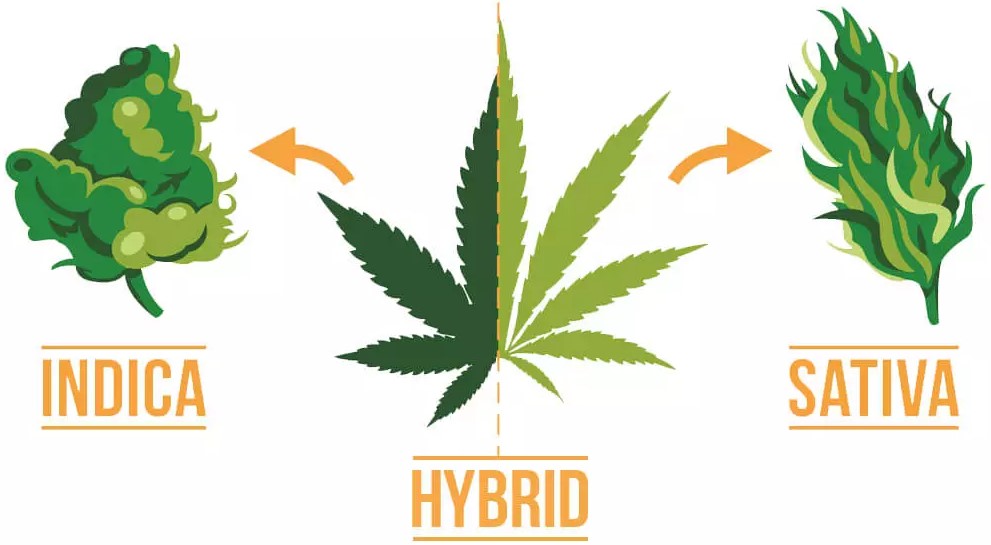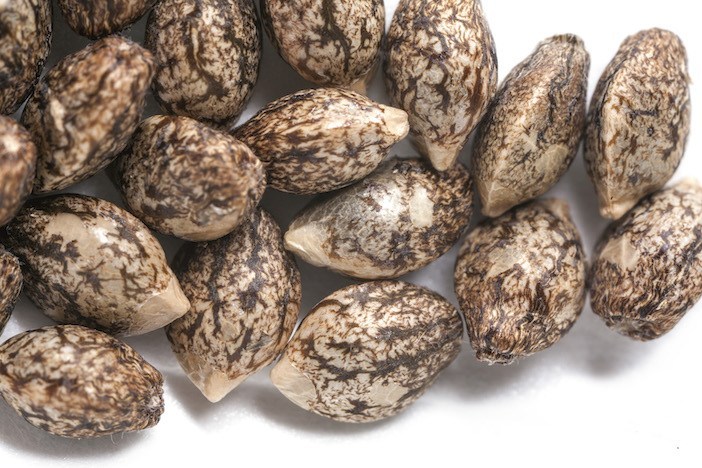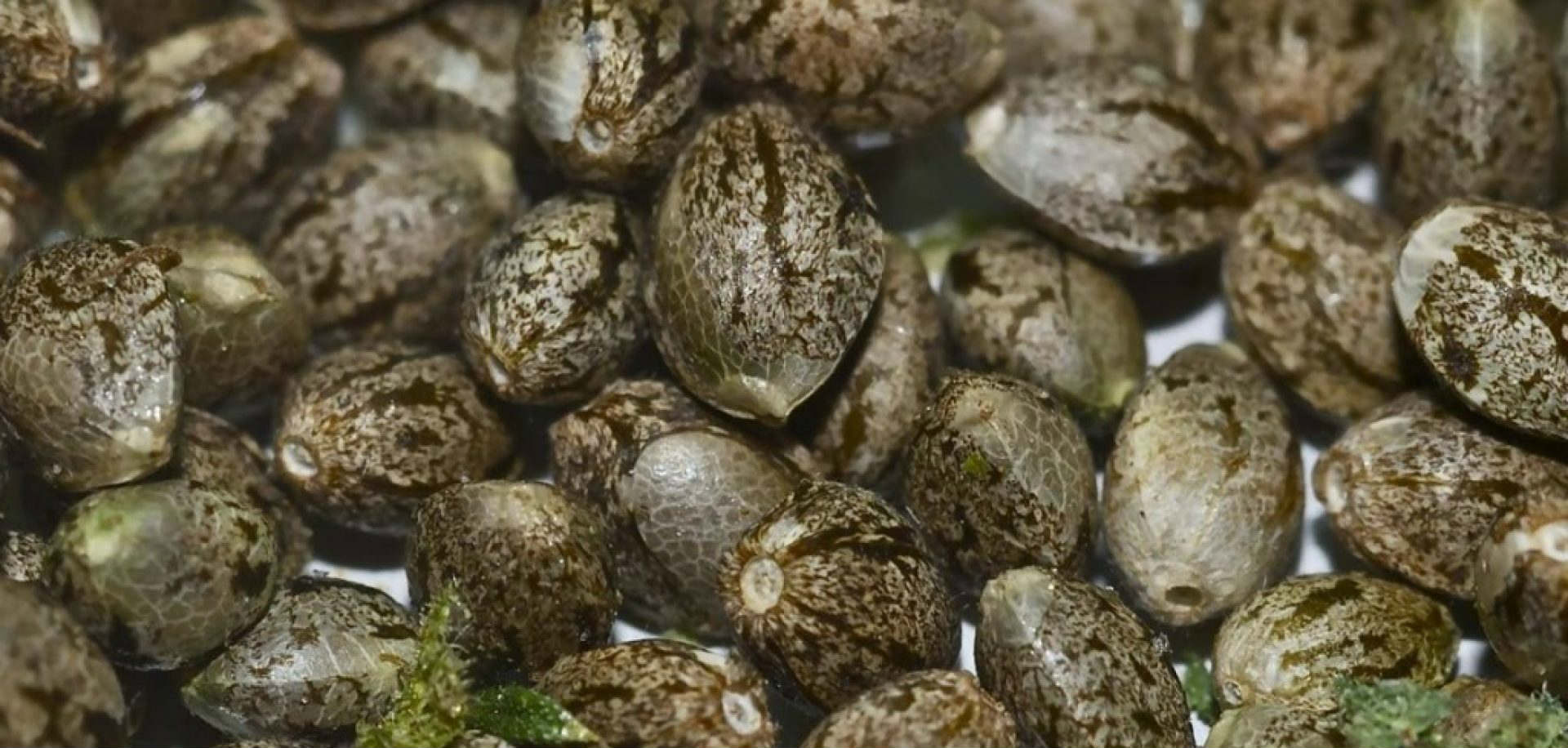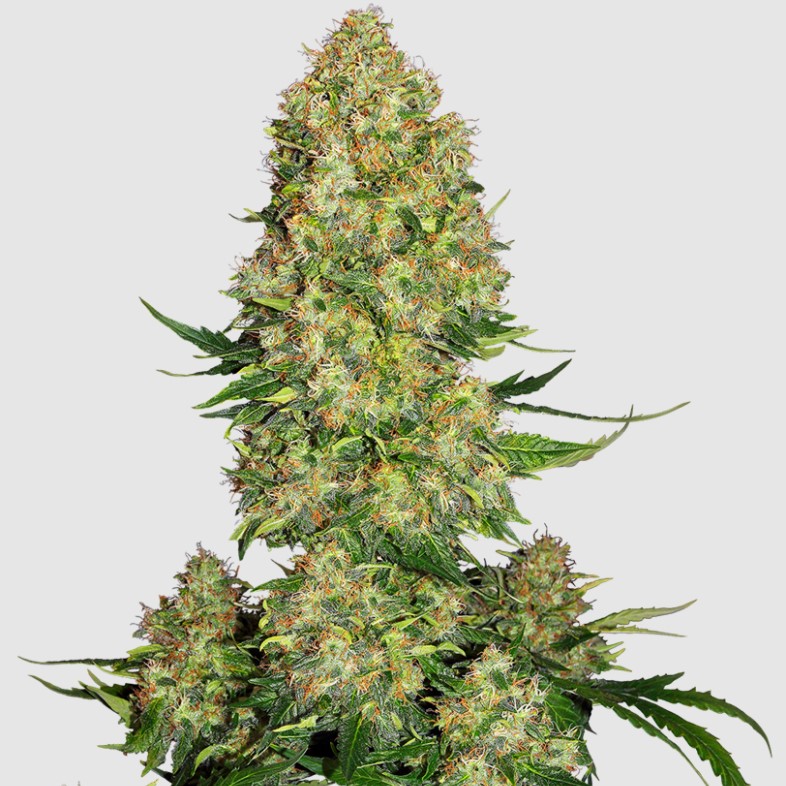There are thousands of Cannabis Seed Varieties on the market today. Out of all the Cannabis seed varieties, 200 are worth considering and out of the 200, about 50 are truly outstanding. Each variety is either a pure species strain (two plants of the same species that have been crossed) or a crossbreed of two species (two plants from different species that have been crossed).*
Before we go on, let’s clarify what we mean by hybrid and strain.
A hybrid cannabis strain is the offspring of two different strains. A strain is simply a stock line with common parents. Stable strains have stable genetic traits, which means that the offspring will all be very similar. In fact, most strains are called strains because of their uniformity in growth and reduced variations in the offspring. Hybrids tend to be unstable, or genetically unpredictable, because of their ‘newness’. A good stabilized hybrid eventually goes on to become a strain.

Cannabis Seed producers tend to only produce strains in the following categories:
• Pure Cannabis Sativa (pure species)
• Cannabis Sativa (mostly Cannabis Sativa species with some Indica)
• Pure Indica (pure species)
• Indica (mostly Indica species with some Sativa)
• Indica/Sativa (50/50 cross between an Indica and a Sativa species)
• Ruderalis (pure species)

Ruderalis is a problematic plant in Cannabis genetics. It does not produce large quantities of THC or flower like the other species. Ruderalis is considered substandard by most growers because it flowers according to age, not according to the photoperiod. This means that the Ruderalis cannabis plant will flower when it is mature enough to do so.
The flowering time of the Ruderalis plant is out of the grower’s hands, so to speak. Ruderalis is grown in countries that experience cold weather conditions — Russia, Eastern Europe and Alaska are places where Ruderalis grows wild. It is an extremely sturdy plant for outdoor growing but the auto flowering properties of this plant make it hard to control.
Trying to clone a Ruderalis plant is nearly impossible because it is very hard to force the clone to remain in the vegetative growth stage. Photoperiod manipulation does not work with Ruderalis plants. The only reason to grow Ruderalis is if you must grow outdoors, or where the photoperiod is of no concern to you.
Pure Cannabis Sativa is a total head high. Pure Indica is a total body stone/couch-lock. A 50/50 cross will give a 50 percent head high and a 50 percent body stone. If an Indica plant is crossed slightly with a Cannabis Sativa plant it will give a 60 percent body stone and a 40 percent head high. A Sativa plant that is crossed slightly with an Indica plant will give a 60 percent head high and a 40 percent body stone. The 60/40 ratio is the most common but breeders can also alter the ratio.

Now you are ready to choose a plant that fits your needs in terms of height, potency and high. Your choice of Cannabis seeds will also depend on whether you will grow indoors or outdoors. Consider as well as other characteristics of your grow space. There is no point trying to grow an eight-foot Sativa indoors if you don’t have the space and a two-foot Indica plant may not survive outdoors if other plants compete with it for light. As a rule, we can always shorten the plant through pruning. But it is impossible to double the plant’s height if the plant’s genetics only allow two or three feet of growth.
SELECTING CANNABIS SEEDS
Have an idea of the species and strain of plant you want? The next step is to verify if the Marijuana seeds are for indoor or outdoor use. There is a saying that all cannabis seeds can be grown indoors and outdoors. This is true, but for the best results, growers should consider what the breeder intended. If the breeder created a plant that does well indoors then it is suggested that you only grow these seeds indoors. If you grow outdoors and the plant does not produce that well, then you know that you should have followed the breeder’s advice.
Of course, there is nothing stopping you from experimenting. Some growers have produced excellent results this way, but if you are new to growing it is best if you follow the advice you’re given.

When selecting seed, check to see if it is pure or if it has been crossed. Most seed sellers will have this listed along with their seed type. When you look at strains that are crossbreeds you must understand which species the plants lean toward. Along with the cross, you can expect the plant to look different. Some Sativa plants may be shorter because of their Indica genetics and some Indica plants may be taller because of their Sativa genetics.
We can also harvest the plant in a specific way to produce a different high. The later you harvest the plant, the more you’ll help produce a couch-lock effect. Harvesting just before peak growth will induce a more cerebral high. If you are working with strains that are for either cerebral or couch-lock highs then you can use harvest time to augment these traits.
Flowering
The next thing to look at is the flowering period. Each strain’s flowering period can vary. It is toward the last days of flowering that you should begin your harvest. If the seed bank says Skunk#l, flowering time seven to nine weeks, then you should be able to know roughly when your plant will be ready. In this case, it will be seven to nine weeks from the time your plant starts to bud.
There will be a number of similar strains that have been produced by different breeders. When you look at the seed bank list you may see many listings for the same seed strain. Take Skunk#l for example. Skunk#l is a mostly Sativa plant but there are about seven breeders who have provided a certain seed bank with Skunk#l seeds.
Each breeder tries to develop the best plant possible from that strain. Some breeders are better than others. Make sure that you check with the seed bank and confirm which strains are the best. The reason for choosing the best is that later on, you can produce your own seeds from that optimal strain. Welcome to the wonderful world of marijuana growing.
STORING SEEDS
You should receive your seeds in a crush-resistant stealth package. You will probably find them inside a clear, crush-resistant labelled plastic package. Check your seeds to make sure that none are crushed. If some or all of the seeds are crushed, send them back to be replaced explaining to the seed bank that this particular package was damaged. Do not open the bag if you are sending the seeds back.
If you are going to store your seeds for more than a year, you should store them in an airtight container in a freezer.



Hi there! Do you use Twitter? I’d like to follow you if that would be ok.
I’m definitely enjoying your blog and look forward to new
posts.